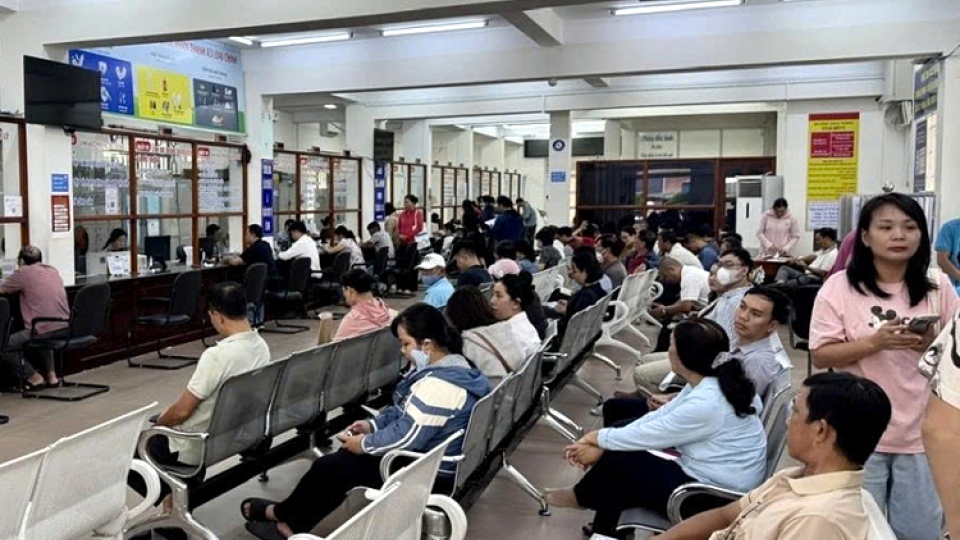Post-merger: Mekong Delta emerges as strategic growth hub
VOV.VN - The decision to eliminate district-level administration, merge communes, and especially consolidate provinces in the Mekong Delta has opened up vast development potential while addressing long-standing structural limitations that have hindered the region for years.
These mergers have created new growth poles. The new Dong Thap province, formed from former Tien Giang and Dong Thap provinces, now proudly leads the country with over 120,000 hectares of fruit orchards. Meanwhile, the merged Ca Mau - Bac Lieu region becomes the ‘shrimp capital’ of Vietnam with 450,000 hectares of aquaculture.
Nguyen Duc Thanh, former director of Ca Mau’s Department of Finance, says that the merger not only enhances the fishery sector but also unlocks major potential in renewable energy and tourism, forming a key southern economic zone with regional reach.
Strong regional linkages

The restructuring facilitates an efficient corridor linking the new Dong Thap province, through the new Tay Ninh province, to the Southeast industrial heartland. Ho Chi Minh City, after merging with Binh Duong province and Ba Ria - Vung Tau province, becomes a mega city of over 13.6 million people.
With the North–South expressway system and future high-speed rail, the new Can Tho city, after merging with Hau Giang and Soc Trang provinces is set to become the central connector of the delta, especially in agriculture and aquaculture.
Deputy Minister of Agriculture and Rural Development Tran Thanh Nam notes that the new Can Tho city accounts for 80% of the region’s high-quality rice areas which is ideal for implementing the one-million-hectare low-emission rice project. It also has great potential to lead in agricultural processing and high-value exports.
He says the processing capacity of the newly merged Can Tho city is very significant, accounting for about 40% of the entire Mekong Delta region. The region’s key export enterprises are also mostly located here. In 2024 alone, the total export turnover of these three former provinces was around US$3.7 billion, mainly from shrimp and rice.
However, the weak linkage between major exporters and certified production areas remains a challenge, leading to price competition and inefficiencies, he admits.
Reaching out to the sea

Post-merger, Mekong Delta provinces now share over 700 km of coastline, significantly reducing logistics costs for 70% of the region’s exports. The new Can Tho city will gain access to the Pacific via Tran De Port and develop maritime industries including tourism, offshore renewables, and aquaculture.
The new An Giang province after merging with Kiên Giang now has over 200 km of coastline, in addition to its border advantages, opening new opportunities for comprehensive development.
According to Nguyen Quoc Khanh, a resident of Binh Duc ward in An Giang province, the removal of district-level administration, the merging of provinces, and the reduction of commune-level units have been met with strong public support.
“For instance, the merger of An Giang and Kien Giang means we now have access to the sea. Such a merger creates new conditions and momentum for the newly formed province to develop,” says Khanh.
While the restructuring of provinces and the streamlining of administrative levels present clear development advantages, significant challenges persist. For years, Mekong Delta localities have voiced concerns over outdated policy frameworks that hinder progress. Administrative procedures remain cumbersome for citizens, while businesses continue to face regulatory barriers that constrain growth.
Challenges remain

Despite the advantages, issues related to governance, investment conditions, and effective administrative reform still need to be addressed.
Le Hoang Phuoc, chairman of the Ca Mau Business Association, shares that many businesses, especially startups, still face difficulties with procedures related to land, taxes, insurance, and the environment. He therefore urges faster removal of bureaucratic obstacles.
Previously overlapping administrative layers caused redundancy. The restructuring reduced 13 provinces to 5, eliminated districts, and significantly reduced the number of communes, thereby streamlining governance and freeing up resources for socio-economic investment.
Vice President Vo Thi Anh Xuan stressed that the two-tier governance system must truly serve the people, especially at the grassroots level, with proactive, citizen-centered management.
Nonetheless, persistent challenges such as low investment, limited employment opportunities, and ongoing outmigration continue to pose significant barriers. National Assembly Chairman Tran Thanh Man points out that while Can Tho is considered the regional growth engine, it still struggles to attract large-scale domestic and foreign investment, and its universities are yet to meet workforce demands.
The restructuring has trimmed administrative layers, cut costs, and increased management efficiency, allowing more resources to be redirected toward development. More importantly, it has created larger, more competitive economic zones that strengthen both intra- and inter-regional connectivity, attracting greater investment for the future.




